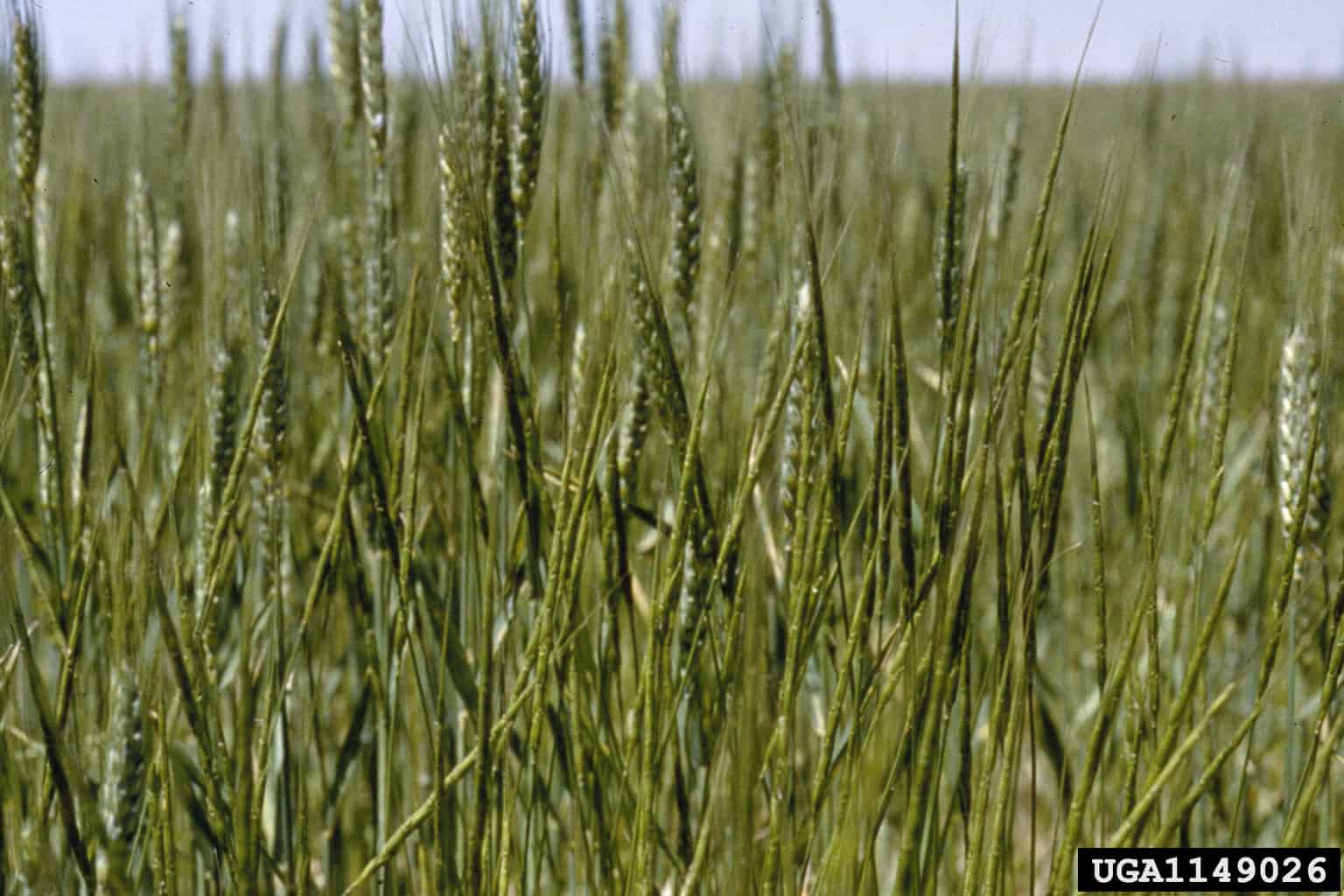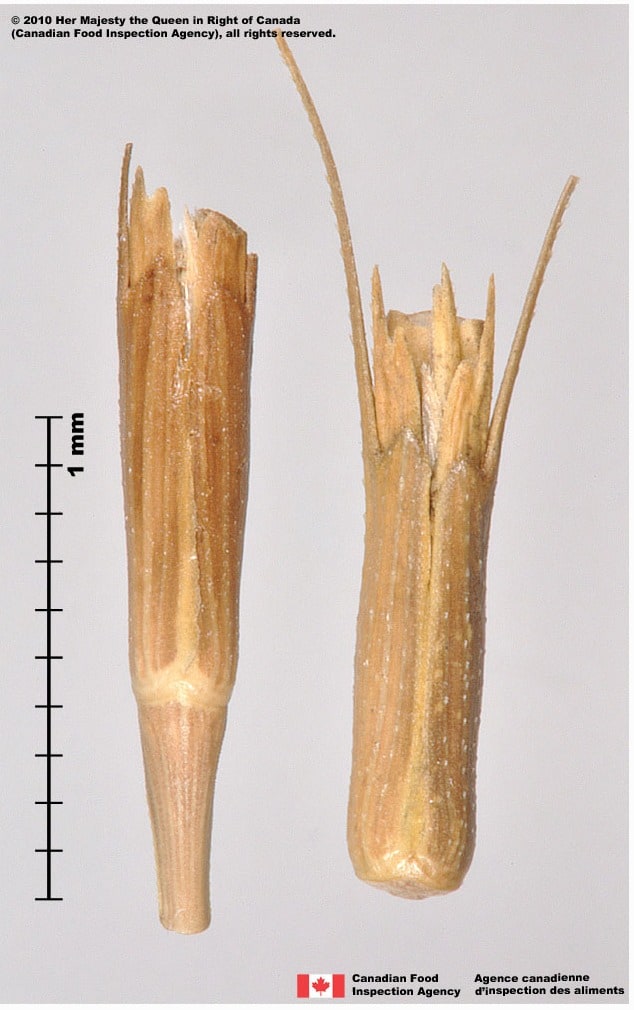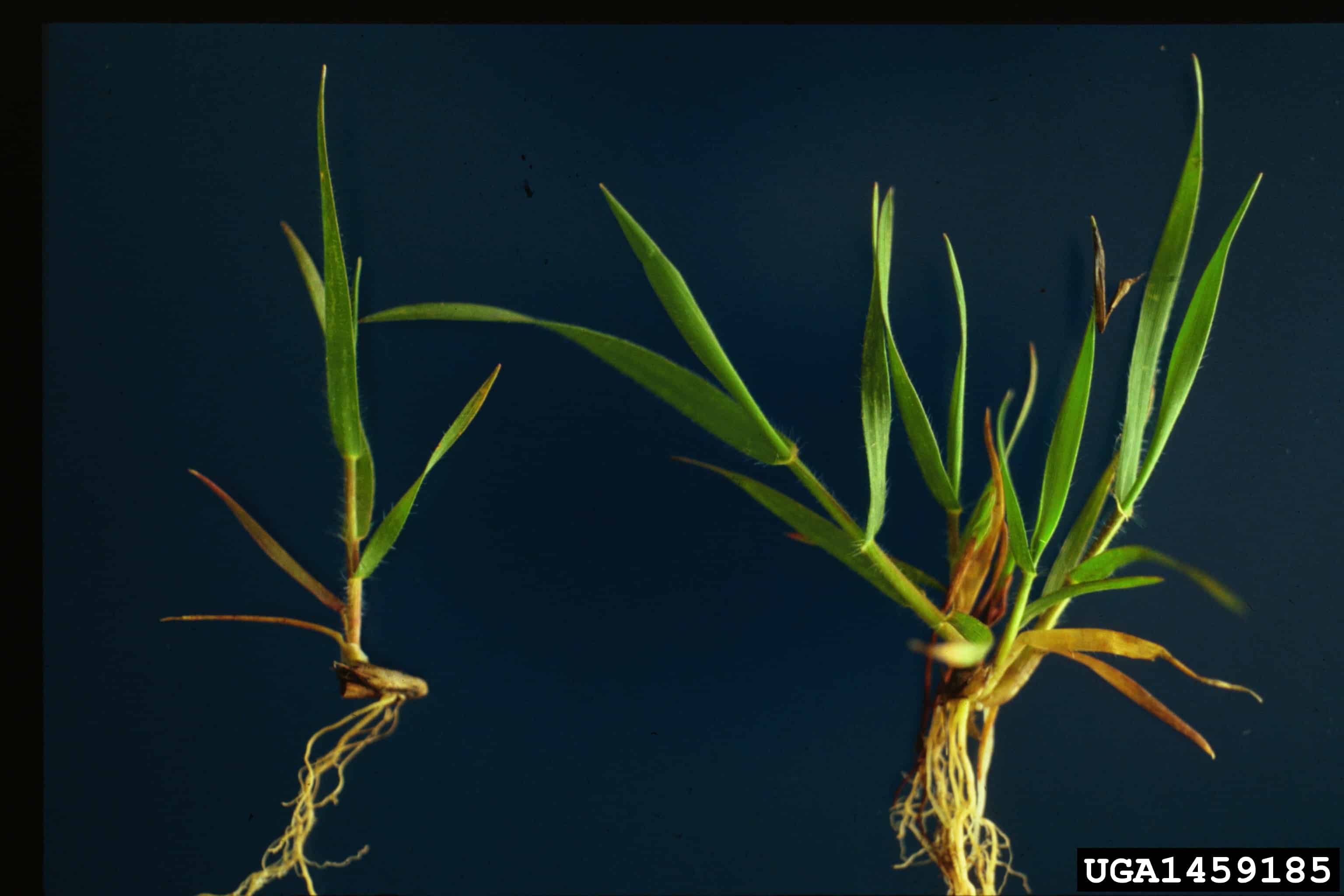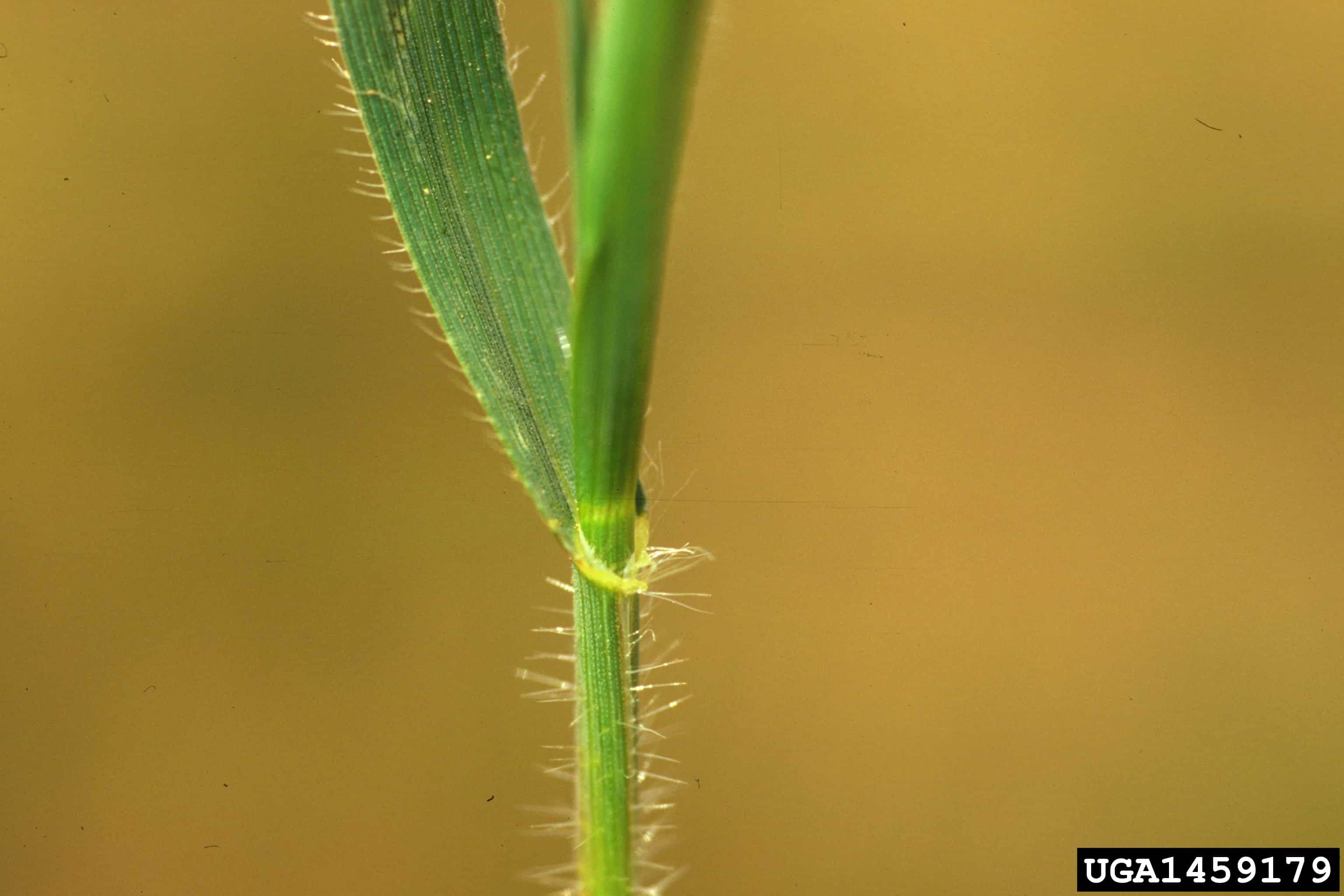Aegilops cylindrica
Overview
Aperçu
Regulation :
Remarques Réglementation:
- CFIA Weed Seeds Order - Class 1: Prohibited Noxious Weed Seeds
- List of Pests Regulated by Canada
- USA Federal Noxious Weed Seed List
Regulation Notes:
Prohibited Noxious, Class 1 in the Canadian Weed Seeds Order (2016) under the Seeds Act. All imported and domestic seed must be free of Prohibited Noxious weed seeds.
Distribution :
Répartition :
Native to southeastern Europe and western Asia. Introduced and widespread in Europe, North Africa and the United States, particularly in the western states (Donald and Ogg 1991; CABI 2020). Limited Canadian populations are under official control.
Habitat and Crop Association :
Habitat et Cultures Associées :
Cultivated fields, pastures and disturbed areas along fences, ditches and roadsides. A major weed of Triticum aestivum subsp. aestivum (common wheat) (Donald and Ogg 1991; CABI 2020).
Economic Use, cultivation area, and Weed Association :
Utilisation économique, zone de culture et association de mauvaises herbes :
Duration of Life Cycle :
Durée du cycle vital:
Winter annual
Dispersal Unit Type :
Type d’unité de dispersion :
Shed as a spikelet embedded in a stem segment. Each spikelet segment contains an average of 2 viable seeds (Donald and Ogg 1991).
General Information
RENSEIGNEMENTS GÉNÉRAUX
Aegilops cylindrica was introduced into North America likely in the late 1800s through contaminated Triticum aestivum subsp. aestivum (common wheat) (Donald and Ogg 1991). It persisted and spread into common wheat growing areas in the western and central United States (CABI 2020). This species is genetically related to common wheat and can form natural hybrids (CABI 2020).
A. cylindrica plants can produce more than 3000 seeds per plant (CABI 2020). The stem breaks into spikelet segments during harvesting and the seed inside remains viable for several years (CABI 2020). The similar size and shape to common wheat make the segments of A. cylindrica difficult to clean out and can cause yield losses of 25 – 29 % in the field (Hubbard et al. 1997).
.
Aegilops cylindrica infestation in the United States (USDA APHIS PPQ – Oxford, North Carolina , USDA APHIS PPQ, Bugwood.org)
Identification
Identification
-
Spikelet segment
Size
- Spikelet segment length*: 12.0 – 14.3 mm; width: 3.0 – 4.3 mm
*Note: minimum and maximum of 10 spikelet segments in a normal range of this species using image measurement (ISMA 2020)
Shape
- Spikelet segment is cylindrical with flat ends
Surface Texture
- Surface of spikelet segment has longitudinal ridges and short hairs along those ridges
Colour
- Spikelet segments are dull or shiny straw-yellow or light brown, some are purplish tinged
Other Features
Glume awn
- Spikelet glumes from the lower part of the spike (inflorescence) may have awns 2.0 – 5.0 mm long (Barkworth et al. 2007)
- Spikelet glumes from the upper part of the spike have longer awns 30.0 – 60.0 mm (Barkworth et al. 2007)
Other features
- The stem segment that the spikelets are embedded in floats in water
- Glumes are rectangular shaped
- Spikelet segments are shiny green when immature

Aegilops cylindrica (jointed goatgrass) spikelet segments





-
Floret
Size
- Floret length: 9.0 – 10.0 mm (Barkworth et al. 2007)
Shape
- Floret is oval shaped (CABI 2020)
Surface Texture
- Floret surface is smooth
Colour
- Floret is dull straw yellow
Other Features
Lemma awn
- Lemma awn length of spikelets near the bottom of the inflorescence: 1.0 – 5.0 mm (Barkworth et al. 2007)
- Lemma awn length of spikelets near the top of the inflorescence: 40.0 – 80.0 mm (Barkworth et al. 2007)
Other features
- Each spikelet has 3-5 florets, and only 2-3 are fertile (Barkworth et al. 2007)

Aegilops cylindrica (jointed goatgrass) spikelet segments and interior: sterile floret, fertile florets, and caryopses




-
Caryopsis
Size
- Caryopsis length: 6.0 – 7.0 mm (Barkworth et al. 2007)
Shape
- Caryopsis is long oval shaped with a pointed embryo end, plano-convex in edge view
Surface Texture
- Caryopsis is finely wrinkled
Colour
- Caryopsis is dull straw yellow or orange
Other Features
- The floret adheres to the caryopsis

Aegilops cylindrica (jointed goatgrass) caryopses





-
Embryo
Size
- Embryo is a rudimentary size compared to the caryopsis
Shape
- Embryo is wedge-shaped in a lateral position at one end of the caryopsis
Endosperm
- Endosperm is hard and opaque white coloured

Aegilops cylindrica (jointed goatgrass) caryopsis


-
Short Embryo Test
Size
Short Embryo Test
Shape
Short Embryo Test
Endosperm
Short Embryo Test
Other Features
Short Embryo Test

Okra (Abelmoschus esculentus)


Identification Tips
CONSEILS POUR L’IDENTIFICATION
The dispersal unit of Aegilops species are characterized by cylindrical or egg-shaped spikelets that are dispersed attached to a piece of the stem. The glumes are generally longitudinally ridged with long awns (Barkworth et al. 2007).
A. cylindrica is distinguished from other species in the genus by cylindrical spikelet segments, rectangular glumes and generally short awns. The other species in this genus generally have egg-shaped spikelet segments and the majority have oval-shaped glumes with long awns (Barkworth et al. 2007).

Aegilops cylindrica (jointed goatgrass) spikelet segments





Additional Botany Information
AUTRES RENSEIGNEMENTS BOTANIQUES
Flowers/Inflorescence
- Spikelet segments are connected together into a cylindrical spike, 22.0 – 120.0 mm long (Barkworth et al. 2007)

Aegilops cylindrica spike (Joseph M. DiTomaso, University of California – Davis, Bugwood.org)




Similar Species
ESPÈCES SEMBLABLES
Similar species are based on a study of seed morphology of various species, and those with similar dispersal units are identified. The study is limited by physical specimen and literature availability at the time of examination, and possibly impacted by the subjectivity of the authors based on their knowledge and experience. Providing similar species information for seed identification is to make users aware of similarities that could possibly result in misidentification.
Rottboellia cochinchinensis (Lour.) Clayton
The spikelet segments of R. cochinchinensis are shorter (length*: 3.8 -7.5 mm) than A. cylindrica and lack surface hairs and awns.
Parapholis incurva (L.) C. E. Hubb.
The spikelet segments of P. incurva are generally smaller (length: 4.5 – 7.5 mm) (Barkworth et al. 2007) than A. cylindrica, may be straight or curved, with wedge-shaped glumes. This species grows in coastal habitats and salt marshes (Barkworth et al. 2007)
Aegilops triuncialis L.
The spikelet segments of A. triuncialis are generally smaller (length: 7.0 – 13.0 mm) (Barkworth et al. 2007) than A. cylindrica, and are oval shaped or almost cylindrical and glumes generally have longer awns 15.0 – 60.0 mm long (Barkworth et al. 2007) than A. cylindrica.
*Note: minimum and maximum of 10 spikelet segments in a normal range of this species using image measurement (ISMA 2020)
Click to select species
Cliquez pour sélectionner les espèces

Rottboellia cochinchinensis

Parapholis incurva

Aegilops triuncialis
Comparison Window
Fenêtre de comparaison
MAIN SPECIES
ESPÈCES PRINCIPALES
Aegilops cylindrica

Aegilops cylindrica
Poaceae
Aegilops cylindrica (jointed goatgrass) spikelet segments
MAIN SPECIES
ESPÈCES PRINCIPALES
Aegilops cylindrica

Aegilops cylindrica
Poaceae
Aegilops cylindrica (jointed goatgrass) spikelet segments
MAIN SPECIES
ESPÈCES PRINCIPALES
Aegilops cylindrica

Aegilops cylindrica
Poaceae
Aegilops cylindrica (jointed goatgrass) spikelet segments
MAIN SPECIES
ESPÈCES PRINCIPALES
Aegilops cylindrica

Aegilops cylindrica
Poaceae
Aegilops cylindrica (jointed goatgrass) spikelet segment showing glume
MAIN SPECIES
ESPÈCES PRINCIPALES
Aegilops cylindrica

Aegilops cylindrica
Poaceae
Aegilops cylindrica (jointed goatgrass) spikelet segment interior
MAIN SPECIES
ESPÈCES PRINCIPALES
Aegilops cylindrica

Aegilops cylindrica
Poaceae
Aegilops cylindrica (jointed goatgrass) fertile florets
MAIN SPECIES
ESPÈCES PRINCIPALES
Aegilops cylindrica

Aegilops cylindrica
Poaceae
Aegilops cylindrica (jointed goatgrass) caryopsis
MAIN SPECIES
ESPÈCES PRINCIPALES
Aegilops cylindrica

Aegilops cylindrica
Poaceae
Aegilops cylindrica (jointed goatgrass) caryopsis
MAIN SPECIES
ESPÈCES PRINCIPALES
Aegilops cylindrica

Aegilops cylindrica
Poaceae
Aegilops cylindrica (jointed goatgrass) spikelet segments and interior: sterile floret, fertile florets, and caryopses
SIMILAR SPECIES
ESPÈCES SEMBLABLES
Rottboellia cochinchinensis

Rottboellia cochinchinensis
Poaceae
Itchgrass (Rottboellia cochinchinensis) spikelets
SIMILAR SPECIES
ESPÈCES SEMBLABLES
Rottboellia cochinchinensis

Rottboellia cochinchinensis
Poaceae
Itchgrass (Rottboellia cochinchinensis) spikelets embedded in stem piece and a caryopsis
SIMILAR SPECIES
ESPÈCES SEMBLABLES
Rottboellia cochinchinensis

Rottboellia cochinchinensis
Poaceae
Itchgrass (Rottboellia cochinchinensis) caryopsis
SIMILAR SPECIES
ESPÈCES SEMBLABLES
Rottboellia cochinchinensis

Rottboellia cochinchinensis
Poaceae
Itchgrass (Rottboellia cochinchinensis) caryopsis
Need ID Help?
Besoin d’aide pour l’identification?
Reference(s)
Référence(s)
Barkworth, M. E., K. M. Capels, S. Long, and M.B. Piep, (eds.) 2007. Flora of North America Volume 24. Magnoliophyta: Commelinidae (in part): Poaceae, part 1. Oxford University Press, New York, New York.
Centre for Agriculture and Bioscience International (CABI). 2020. Invasive Species Compendium, CAB International, Wallingford, UK. https://www.cabidigitallibrary.org/journal/cabicompendium Accessed Sept. 16, 2020 .
Donald, W. and Ogg, A. 1991. Biology and Control of Jointed Goatgrass (Aegilops cylindrica), a Review. Weed Technology 5: 3-17.
Government of Canada (GC). 2016. Canadian Weed Seeds Order. https://laws-lois.justice.gc.ca/eng/regulations/SOR-2016-93/page-2.html (English) https://laws-lois.justice.gc.ca/fra/reglements/DORS-2016-93/page-2.html (French)
Hubbard, C. M., Weller, C. L. and Jones, D. D. 1997. Selected physical properties of Jointed goatgrass (Aegilops cylindrica). Applied Engineering in Agriculture. VOL. 13(6):747-750.
International Seed Morphology Association (ISMA). 2020. Method for Seed Size Measurement. Version 1.0. ISMA Publication Guide.
Plants of the World Online (POWO). 2022. Facilitated by the Royal Botanic Gardens, Kew. Published on the Internet; http://www.plantsoftheworldonline.org/ Accessed April 29, 2022.
Tropicos.org. 2022. Missouri Botanical Garden. https://tropicos.org Accessed April 29, 2022.
U.S. Department of Agriculture-Agricultural Research Services (USDA-ARS). 2020. Germplasm Resources Information Network (GRIN), https://npgsweb.ars-grin.gov/gringlobal/taxon/taxonomysimple.aspx Accessed May 13, 2020.




